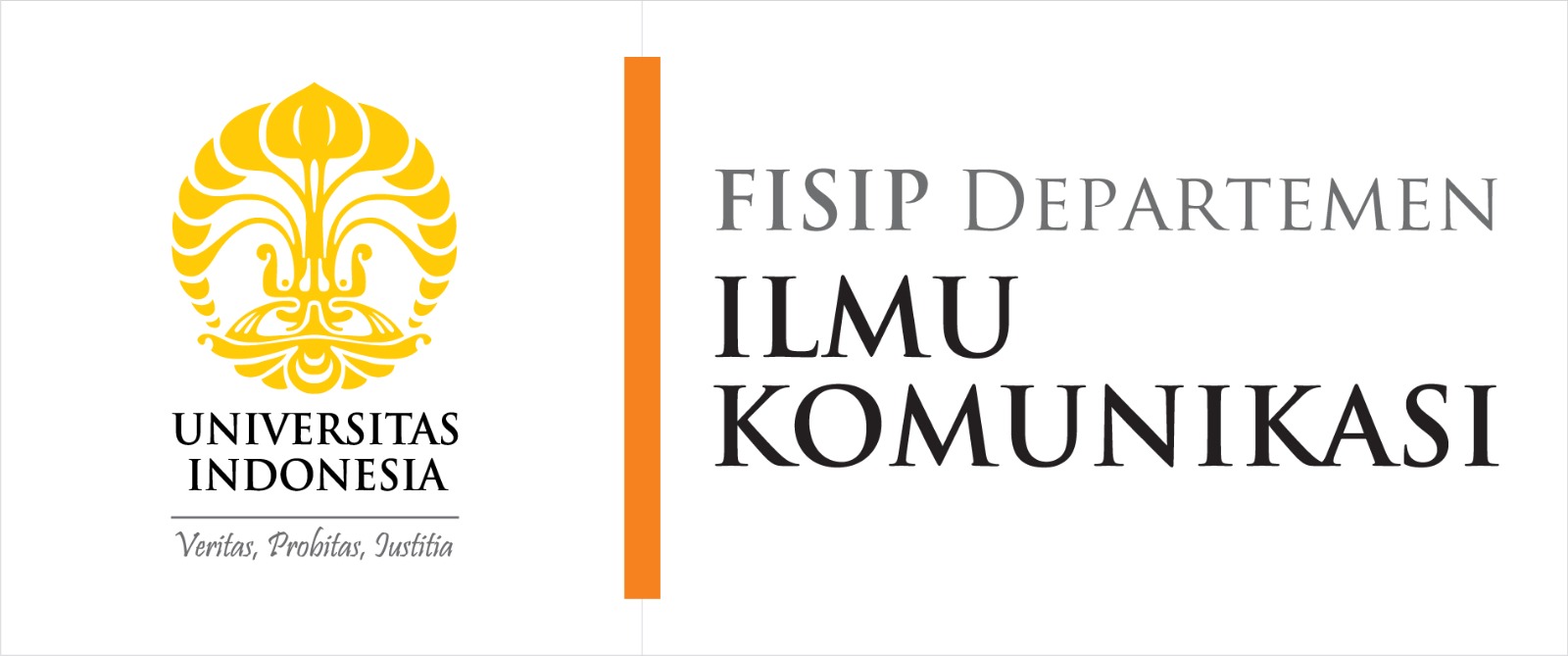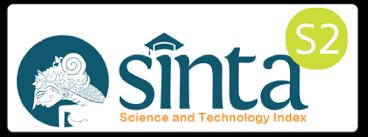JURNAL KOMUNIKASI INDONESIA
Abstract
VR has emerged as a promising tool for revolutionizing science education, offering immersive and interactive experiences that can enhance student understanding. It holds significant potential as a communication medium for explaining the complexities of science in classroom settings. Despite its potential, VR’s penetration in science education remains limited. This research explored the facets influencing VR adoption in education, focusing on science teachers' perspectives in Jakarta. Using a qualitative approach, the study investigates how the SCOT concept, grounded in communication theory, affects the adoption of VR in the educational sector. Key themes identified included the role of networking, school culture, socioeconomic disparities, policies, and pedagogical considerations. Teacher characteristics—such as openness to innovation and collaborative skills—were found to act as catalysts for adoption. Conversely, resistance to change and limited access to resources emerged as significant obstacles. The research underscores communication plays a pivotal role in the diffusion of VR technology in educational contexts. The findings offer valuable insights for policymakers, educators, and technology developers. This research contributes to education sector by providing a nuanced understanding about social construction in VR adoption, complementing prior quantitative studies.
Bahasa Abstract
VR muncul sebagai alat untuk merevolusi pendidikan sains, menawarkan pengalaman imersif dan interaktif, yang dapat meningkatkan pemahaman siswa. Teknologi ini memiliki potensi besar sebagai media komunikasi untuk menjelaskan kompleksitas sains menjadi lebih mudah dipahami. Meskipun demikian, penetrasi VR dalam pendidikan sains masih minim. Penelitian ini mengeksplorasi berbagai faktor adopsi VR dalam pendidikan sains, dengan fokus pada perspektif guru sains di Jakarta. Menggunakan pendekatan kualitatif, studi ini menyelidiki bagaimana konsep SCOT dalam bidang komunikasi dapat memengaruhi adopsi VR di sektor pendidikan. Temuan utama penelitian menunjukan pentingnya peran dari jejaring, budaya sekolah, ketimpangan sosial-ekonomi, kebijakan, dan pertimbangan pedagogis. Karakteristik guru—seperti keterbukaan terhadap inovasi dan keterampilan kolaboratif—terbukti menjadi katalisator bagi adopsi teknologi ini. Sebaliknya, resistensi terhadap perubahan dan keterbatasan akses terhadap sumber daya muncul sebagai hambatan signifikan. Penelitian ini menekankan bahwa komunikasi memainkan peran penting dalam difusi teknologi VR pada konteks pendidikan. Temuan ini dapat menjadi rekomendasi bagi pembuat kebijakan, pengajar, dan pengembang teknologi dalam mengadopsi inovasi teknologi di sektor pendidikan. Penelitian ini berkontribusi pada sektor edukasi dengan memberikan pemahaman yang lebih mendalam tentang konstruksi sosial adopsi VR, melengkapi studi kuantitatif sebelumnya.
References
Bailenson, J. (2018). Experience on demand: What virtual reality is, how it works, and what it can do. WW Norton & Company.
Basu, S. (2023). Three decades of social construction of technology: dynamic yet fuzzy? The methodological conundrum. Social Epistemology, 37(3), 259–275.
Birt, J. (2017). Improving paramedic distance education through mobile mixed reality simulation. Australasian Journal of Educational Technology, 33(6), 69–83. https://doi.org/10.14742/ajet.3596
Buchori, B. A., & Agnita, S. P. (2021). Implementation of Virtual Laboratory Media to Learning Geometry in Mathematics Education Program of Universitas PGRI Semarang. eprints.upgris.ac.id. http://eprints.upgris.ac.id/1045/1/4C.pdf.
Chang, S. C. (2020). Integration of the peer assessment approach with a virtual reality design system for learning earth science. Computers and Education, 146. https://doi.org/10.1016/j.compedu.2019.103758.
Chourasia, S., Tyagi, A., Pandey, S. M., Walia, R. S., & Murtaza, Q. (2022). Sustainability of Industry 6.0 in Global Perspective: Benefits and Challenges. Mapan - Journal of Metrology Society of India, 37(2), 443–452. https://doi.org/10.1007/s12647-022-00541-w
Farshid, M., Paschen, J., Eriksson, T., & Kietzmann, J. (2018). Go boldly!: Explore augmented reality (AR), virtual reality (VR), and mixed reality (MR) for business. Business Horizons, 61(5), 657–663. https://doi.org/10.1016/j.bushor.2018.05.009
Frei-Landau, R., Muchnik-Rozanov, Y., & Avidov-Ungar, O. (2022). Using Rogers’ diffusion of innovation theory to conceptualize the mobile-learning adoption process in teacher education in the COVID-19 era. Education and Information Technologies, 27(9), 12811–12838. https://doi.org/10.1007/s10639-022-11148-8
Fuchs, H., Sutherland, I. E., Sproull, R. F., Seitz, C. L., Brooks, F. P., & Foster Jr, H. Q. (2018). VR@ 50: celebrating Ivan Sutherland’s 1968 head-mounted 3D display system. In ACM SIGGRAPH 2018 Panels (hal. 1).
Futuclass. (2023). STUDY : The Opinions of Over 900 Teachers and Students on Virtual Reality in Education.
Gil-Garcia, J. R., Vivanco, L. F., & Luna-Reyes, L. F. (2014). Revisiting the problem of technological and social determinism: Reflections for digital government scholars. Innovation and the Public Sector, 21, 254–263. https://doi.org/10.3233/978-1-61499-429-9-254
Grant, A. E. (2018). The communication technology ecosystem. Communication Technology Update and Fundamentals, 16th Edition, 1–8. https://doi.org/10.4324/9780203702871-1
Hafizah, N. (2023). Media Pembelajaran Digital Generasi Alpha Era Society 5.0 Pada Kurikulum Merdeka. Al-Madrasah: Jurnal Pendidikan Madrasah Ibtidaiyah, 7(4), 1675. https://doi.org/10.35931/am.v7i4.2699
Heriyanto, H. (2018). Thematic Analysis sebagai Metode Menganalisa Data untuk Penelitian Kualitatif. Anuva, 2(3), 317. https://doi.org/10.14710/anuva.2.3.317-324
Huong, P. T., & Duc, N. L. (2023). The Perceptions of Prospective Digital Transformation Adopters: An Extended Diffusion of Innovations Theory. TEM Journal, 12(1).
Kompas. (2020). Karena Pandemi Covid-19, Kemendikbud: 68 Juta Anak Belajar dari Rumah. https://tekno.tempo.co/read/1372498/karena-pandemi-covid-19-kemendikbud-68-juta-anak-belajar-dari-rumah
Lindgren, S. (2017). Digital Media and Society. SAGE Publications Ltd.
Liu, R. (2020). Effects of an immersive virtual reality-based classroom on students’ learning performance in science lessons. British Journal of Educational Technology, 51(6), 2034–2049. https://doi.org/10.1111/bjet.13028
Liu, R., Wang, L., Lei, J., Wang, Q., & Ren, Y. (2020). Effects of an immersive virtual reality-based classroom on students’ learning performance in science lessons. British Journal of Educational Technology, 51(6), 2034–2049. https://doi.org/10.1111/bjet.13028
Marks, B. (2022). Adoption of virtual reality technology in higher education: An evaluation of five teaching semesters in a purpose-designed laboratory. Education and Information Technologies, 27(1), 1287–1305. https://doi.org/10.1007/s10639-021-10653-6
Martin, M. (2020). Values in design and technology. In Learning to Teach Design and Technology in the Secondary School (hal. 291–302). Routledge.
Martinelli, D. (2020). What you see is what you hear. Springer.
Mead, C. (2019). Immersive, interactive virtual field trips promote science learning. Journal of Geoscience Education, 67(2), 131–142. https://doi.org/10.1080/10899995.2019.1565285
Nathalia, H. B., & Irwansyah, I. (2018). Aplikasi Transportasi Online GO-JEK Bentuk dari Konstruksi Sosial Teknologi dalam Media Baru. Mediator: Jurnal Komunikasi, 11(2), 227–235. https://doi.org/10.29313/mediator.v11i2.3737
Nurhalidah, N., & Briandana, R. (2022). Konstruksi Sosial Teknologi Dalam Pembelajaran Virtual Di Kota Tangerang. WACANA: Jurnal Ilmiah Ilmu Komunikasi, 21(1), 11–24. https://doi.org/10.32509/wacana.v21i1.1655
Osborne, J. (2023). Science, scientific literacy, and science education. In Handbook of research on science education (hal. 785–816). Routledge.
Qodriani, L. U., & Wijana, I. D. P. (2020). Language Change in ‘ New - Normal ’ Classroom A Study on Pedagogical Communication in New Media. 4th International Conference on Language, Literature, Culture, and Education, 509(Icollite), 385–389.
Rogers, E. M., Singhal, A., & Quinlan, M. M. (2014). Diffusion of innovations. In An integrated approach to communication theory and research (hal. 432–448). Routledge.
Rojas-Sánchez, M. A. (2023). Systematic literature review and bibliometric analysis on virtual reality and education. Education and Information Technologies, 28(1), 155–192. https://doi.org/10.1007/s10639-022-11167-5
Sharma, K. (2023). Impact of Virtual Reality on Education. International Research Journal of Modernization in Engineering Technology and Science, 10(2), 19–25. https://doi.org/10.56726/irjmets36830
Sukmawati, F., Santosa, E. B., & ... (2022). Virtual Reality as a Media for Learn Animal Diversity for Students. Jurnal Edutech https://ejournal.undiksha.ac.id/index.php/JEU/article/view/50557
Verona, R., Ariyanti, S. N., Gidion, G., Bahari, Y., & Warneri, W. (2023). Penerapan Teori Difusi Inovasi pada Perkembangan Kurikulum Pendidikan di Indonesia. Edukatif : Jurnal Ilmu Pendidikan, 5(6), 2569–2581. https://doi.org/10.31004/edukatif.v5i6.5870
Winanti, A., Anindita, J., & Irwansyah, I. (2023). Mediamorphosis: A Systematic Literature Review. Journal of World Science, 2(9), 1409–1420. https://doi.org/10.58344/jws.v2i9.411
Zhu, Y. (2022). The Historical Evolution of the Media in McLuhan’s Theory. Cross-Currents: An International Peer-Reviewed Journal on Humanities & Social Sciences, 8(6), 85–90. https://doi.org/10.36344/ccijhss.2022.v08i06.002
Recommended Citation
Muslich, Adipurwa
(2025)
"Social Construction of Technology in VR Adoption for Science Education,"
JURNAL KOMUNIKASI INDONESIA: Vol. 14:
No.
1, Article 4.
DOI: 10.7454/jkmi.v14i1.1298
Available at:
https://scholarhub.ui.ac.id/jkmi/vol14/iss1/4
Included in
Communication Technology and New Media Commons, Educational Technology Commons, Other Communication Commons, Science and Mathematics Education Commons




